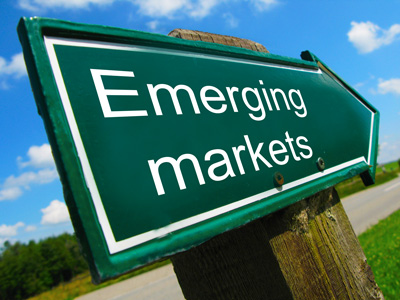theyucatantimes.com
Mexico’s increasing purchasing power, as well as key reforms passed by recently elected President Enrique Peña Nieto, have contributed to what economic experts at HSBC say may become the world’s eighth-biggest economy by 2050. While it hasn’t received the recent media attention of other emerging economies like Brazil or India, Mexico has quietly positioned itself to be a major economic force in the long term.
Manufacturing
One of the primary drivers of Mexico’s recent growth comes from the manufacturing sector. Merchandise goods rose three percent in 2013, a modest but encouraging gain, and one that is expected to improve over the remainder of 2014. Global economic recovery is expected to help Mexico continue its own improvement, especially in the appliances industry, which is expected to grow significantly in the near future. The Boston Consulting Groupexpressed substantial confidence in Mexico’s manufacturing, noting that manufacturing could add between $20 billion and $60 billion to Mexico’s economy through 2018.
Internationalization
Manufacturing has indeed picked up, due in large part to foreign companies setting up shop in Mexico. Much of the recent investment in Mexico’s manufacturing sector comes as a result of China’s rising wages, which have made many companies looking elsewhere for manufacturing options. China’s share of the American import market has also declined, and Mexico has rushed to claim it; their trade with the United States has grown to over $500 billion annually, a percent increase since 2010.
In October 2013 Chrysler announced they were investing $1.3 billion to open plants in Mexico, and Audi has also invested over $1 billion to build their luxury cars in San José Chiapa. Lower labor and energy costs and a business-friendly government have made Mexico an increasingly attractive place for outside businesses looking to restructure their production.
Exports
Mexico’s exportation market is growing, as well, driven largely by growing fields within the country. Information Communication Technology alone is expected to account for 13 percent of the increase in exports from 2017 to 2020. Likewise, increased spending in the country’s Research and Development sector will allow Mexico to service a broader international market. The United States and Canada are likely to remain two of the largest export destinations for the foreseeable future, but Chinese demand is increasing. China is expected to be Mexico’s second largest export market by 2030.
Mexico has also benefitted substantially from the North American Free Trade Agreement (NAFTA). Though it took time and patience to see NAFTA’s effects, Mexico now exports about $1 billion worth of goods per day, which is more than ten times what they were when the NAFTA was implemented in 1994. And NAFTA is hardly Mexico’s only free trade agreement. In fact, Mexico has 44 such agreements, more than both the United States and China combined.
Stock Market
In September 2012, Banco Santander ’s Mexican unit, Grupo Financiero Santander Mexico (SANMEXB) had Mexico’s largest IPO to date, totaling $4.3 billion—and public offerings have been announced at a breakneck pace ever since.
Meanwhile, Mexico’s private equity sector has grown 50 percent since 2000, totaling $14.6 billion in 2012. Mexico’s stock market isn’t currently as robust as those in some emerging markets, but that may change in the near future.
Diversification
Mexico’s forays into diversification has only solidified its status as a growing economic power, particularly with its pension funds. New demand for pension funds has played a key role in Mexico’s surging stock market, and the flurry of IPOs announced last fall was prompted largely by pension funds that are growing more confident about buying individual stocks.
These pension funds have experienced a surge since regulators under Peña Nieto’s leadership first allowed them to invest in Mexico IPOs last year. Mexico has 12 funds—known as Afores—that combine nearly $150 billion in assets. Last fall, pension fund regulator Consar gave the Afores permission to invest in infrastructure and real estate trusts in the U.S., presenting more options to help Mexico diversify.
Bonds are also contributing to Mexico’s increasingly diversified economy. In February, Moody’s granted Mexico its first-ever A3 rating for its government bonds, an expression of confidence the market has in Mexico’s reforms. Mexico responded by offering their first 100-year bonds in British pounds in March, raising $1.66 billion in the process.
President Peña Nieto has also introduced changes that eliminate state monopolies and quasi-monopolies, a move that may present new investment options in the coming years. If these changes are successful, Mexico’s bond market may continue to grow.
Credit
Credit and banking is admittedly a weak spot in Mexico. Millions of Mexican citizens operate outside the banking system, without savings accounts or debit cards. Mexico also has one of the lowest rates of commercial lending in Latin America, which has discouraged entrepreneurship and stunted its economic growth. But things could be looking up.
Last November, Mexico’s Congress approved the reform of 34 financial and banking laws in an attempt to strengthen banking regulations, enhance competition, and hopefully court many of Mexico’s underbanked citizens. Under these changes, banks will have better power to collect unpaid debt, a move designed to increase overall lending confidence. As a result, businesses looking for financing will find more options than before. Time will tell how the new laws will impact Mexico’s banking, but a stronger credit industry certainly has the potential to stimulate consumer spending and market growth.
These factors have driven Mexico’s push into the economic big leagues. How they will perform in the near future remains to be seen, but they’ve already succeeded in putting Mexico’s economy on a solid footing for the years to come.
by Daniel Broderick
Daniel Broderick is a freelancer who writes about current events, global markets, art and media. He lives in New York City.
Source: http://www.forbes.com/


No comments:
Post a Comment